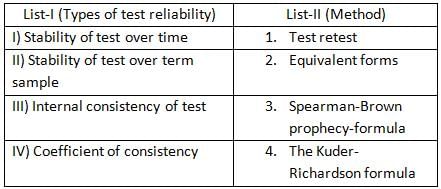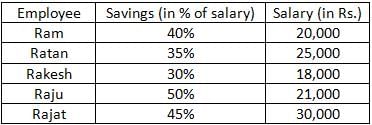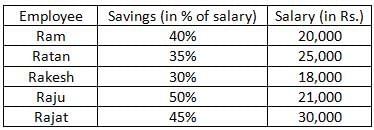UGC NET Paper 1 Mock Test - 10 - UGC NET MCQ
30 Questions MCQ Test - UGC NET Paper 1 Mock Test - 10
The alcohol and water in a mixture are in the ratio of 4 ∶ 5 respectively. 20 litre water is added to it. If the ratio of alcohol and water in the new mixture is 1 ∶ 3 respectively, then what is the total quantity of the alcohol in the new mixture?
Match List I with List II
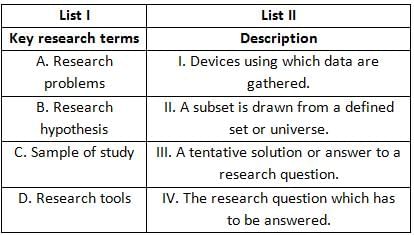
Choose the Correct answer from the option given below:

Choose the Correct answer from the option given below:
Match List-I with List-II and indicate your correct answer from the codes given below:
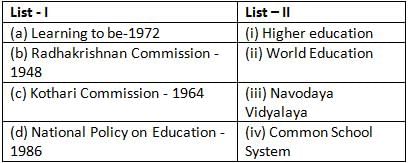

Considering the context of statistical hypothesis testing in research, which of the following statements best describes a null hypothesis?
IP Address which is assigned for a short amount of time to a device by a network when it goes online is termed as:
Which of the following objectives is NOT correct with respect to e-Kranti: National e-Governance Plan 2.0 ?
Consider the following statements regarding State of the Education Report for India 2020: Technical and Vocational Education and Training (TVET).
1. It was launched virtually by UNESCO New Delhi.
2. The Report outlines a set of ten recommendations that should be adopted to help achieve the stated vision for TVET in the country.
Which of the statements given above is/are correct?
If A's salary is 25% less than that of B, then how much per cent is B's salary more than that of A?
Match each type of test reliability in Lists - I with the method of establishing the reliability in List - II.

Which of the following letter-clusters will replace the question mark (?) in the given series?
UV, OY, IB, CE, ?
A Virtual Private Network (VPN) in an organization is primarily used for:
The university that was considered the learning center for royal princes during the Gupta period in ancient India was
The total expenditure of Ratan, Rakesh and Raju is approximately what percent less than the totals salary of the five employees together?
Find the difference between the expenditure of Ram and Ratan together to that of Raju and Rajat together.
Find the ratio of the total expenditure of Ram and Rakesh together to the total savings of Rakesh, Raju and Rajat together.
Find the average savings of the five employees together.
Ram wants to send a letter to his friend who is living in Mumbai. The correct order of sending a letter to his friend
A. write the message on blank paper
B. put it in the post-box
C. envelop the letter
D. write the receiver address on the envelope
E. Paste a postal stamp on the envelope
What does Charles Darwin describe in his book 'On the Origin of Species' ?
The Theory of 'Survival of the Fittest' refers to an organism's -
a. survival Ability
b. strength
c. prowess
d. ability to breed
According to the passage, 'artificial selection' refers to
Which procedure is responsible for changing dinosaurs into birds?






